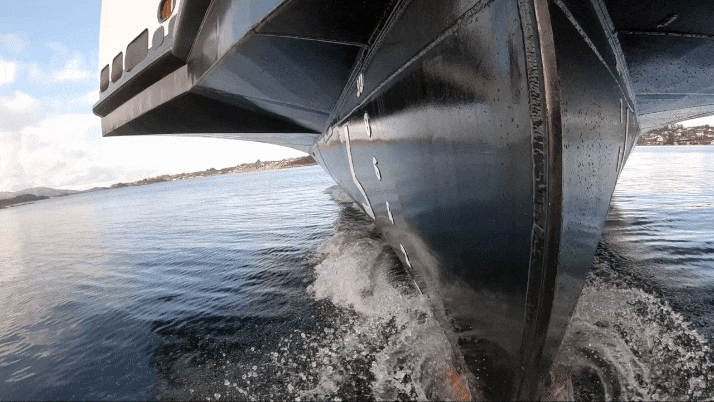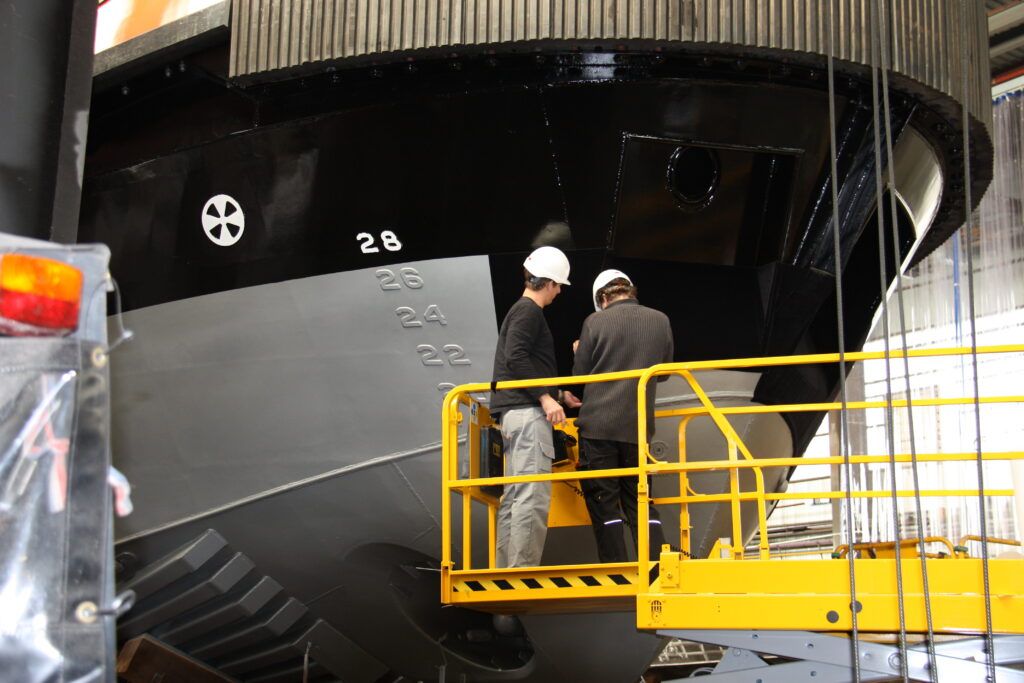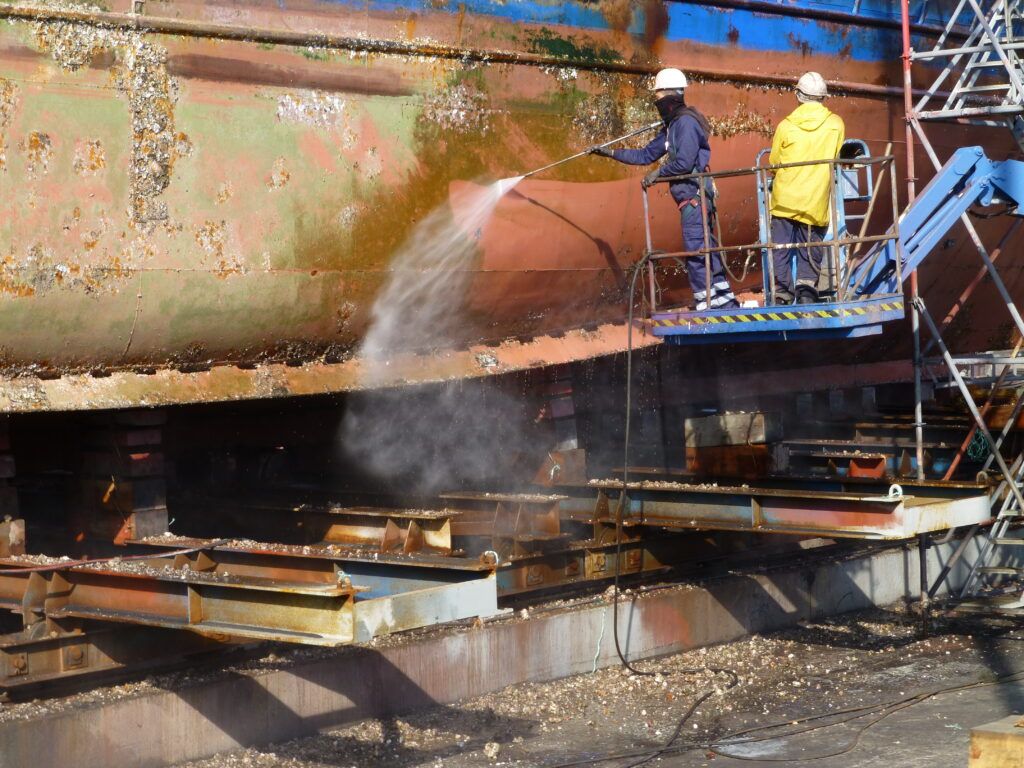
Antifouling’, how to protect the hull of the boat… and the environment
The anti-corrosion or anti-fouling products used on ships release toxics or microplastics that are harmful to the diversity of the seas and our own health. This is why new sustainable solutions are emerging. We review the most innovative ones and ask their managers why they are more widespread among recreational and blue economy boats, but not in the commercial fleet.

What is fouling ?
The accumulation of aquatic organisms such as algae, barnacles, mollusks and a variety of microorganisms on the hulls of ships is called fouling, a process that occurs naturally but has several drawbacks.
This biofouling causes hydrodynamic drag, which can slow a ship's speed and increase its fuel consumption by 10% to 40%, costing an additional 20 billion euros per year and increasing CO2 emissions. In addition, some of these organisms can be corrosive or damage the hull structure if they grow out of control.
Biofouling can also affect water intakes and engine cooling pipes and thus lead to higher maintenance costs and even breakdowns and safety problems at sea.
Traditionally, ship hulls have been protected from corrosion and fouling with antifouling paints. The problem is that many paints used are highly toxic, as they traditionally use biocides, some of which are banned or restricted, as in the case of tributyltin (TBT), chlorothalonil, dichlofluoroamide, Sea-Nine 211, Diuron, Irgarol 1051 or zinc pyrithione, while others use elements such as copper and other heavy metals that are highly polluting and bioaccumulative.
"In the last decade, the demand for environmentally friendly antifouling paints has grown a lot, although in real terms, compounds such as biocides and around 30% copper are still present. The damage they both cause to the environment is scientifically proven evidence, and the laws that should abolish their use are slower than they should be," warns Paolo Nosenzo, Greensailor CEO, italian company that develops and produces ecological paints for boats.
For Alejando Samaniego, CEO and founder of Titanium Technology , biofouling and corrosion, besides being closely related, are major technological challenges for the industry. "Finding a solution with which to address both problems and minimize their environmental impact is a very attractive task from a technical point of view, but also from the motivation to make a positive impact," he explains.

Several solutions for a booming market
According to The Brain Insights, the global smart antifouling coatings market value was USD 470.44 million in 2023 and is estimated to reach USD 3,978.42 million by 2033.
According to this report, 44% of the ships surveyed had more than 10% of the underwater hull surface area covered with fouling. This high percentage reflects that the antifouling coatings market is a concern for the industry.
And what are these smart solutions? Titanium Technology has compiled a list:
- Anti-fouling paints
They release biocidal and highly polluting substances into the water, which are harmful to the environment. - Metal electrodissolution systems
A direct current is generated in metallic electrodes (copper, aluminum or steel), which releases ions from the electrodes into the water. These ions, which are highly polluting, prevent the incrustation of microorganisms. - Chemical dosing
It is based on the insertion of chemicals into pipes, such as ferrous chloride. The chlorine eliminates microorganisms, and the iron coats the pipes with a protective layer that prevents corrosion. - Ultrasonic
A wave generator sends high-frequency electrical pulses to the outside of the vessel. Through the piezoelectric effect, ultrasonic pulses are generated that render the surface of the ship uninhabitable, preventing organisms from adhering to surfaces. - Electrochlorination
It is based on the generation of sodium hypochlorite from chlorine or chlorine salts. There are different methods of on-site chlorine generation, which generally require the installation of large machines and are usually used for specific volumes. - New generation antifouling paints, or fouling release coatings (FRC).
They lack biocidal substances, so their antifouling properties are based on their non-stick properties. They do not work well for moored boats or on propellers, as they require some movement of the hull through the water to work properly.
Regarding the acceptance of these products in the market, it seems pertinent to know the first-hand opinion of the CEOs of the companies involved in their development:
- Rik Breur, CEO of Finsulate, a dutch company that has developed an antifouling based on the repellent effect of sea urchin spines, believes that, in terms of sustainability, large shipping companies focus their efforts exclusively on carbon neutrality and ignore other environmental areas. "Maybe I am generalizing, but from what I see, the industry will only go green driven by legislation and I don't have the impression that products like the ones we developed will be implemented any time soon. Contrary to what is happening in the yachting sector and the blue economy, where sustainability is already part of the chain," he opines. For Finsulate's CEO, the International Maritime Organization must play an important role. "We have seen bans such as organotins, banned since 2008, succeed. So I urge regulators to follow through," he says.
- In the case of Greensailor, Nosenzo shares that they have received "positive feedback on their environmentally friendly antifouling paints," and that they are, in fact, testing with several shipyards."
- Samaniego, from Titanium Technology, explains that "fortunately, the level of awareness is increasing. In addition, it is driven by regulations that try to limit the use of chemicals with good biocidal properties, but with a strong impact on the ecosystem. In our case, we have the advantage that our solution reduces the environmental impact while improving process operations, which is an important advantage".
These are some of the most innovative 'antifouling' products already on the market
It is already clear that sustainable and innovative solutions for biofouling exist; all that is lacking is the will to apply them in the maritime supply chain. In fact, recreational vessels and those in the blue economy sector are already taking the lead in their use.
- Microfibers based on the spines of sea urchins
In 2019 Finsulate CEO Rick Breuer won the European Patent Office's European Inventor of the Year award for his innovative solution based on sea urchin spines. Today his innovative solution is commercialized in various 'antifouling' products.
They are supplied in rolls and consist of two sides: one made of nylon microfibers and the second of a self-adhesive film that adheres directly to the hull of the boat. In the water, the constant rolling of the nylon "spines" creates an unattractive surface for algae, mussels, barnacles and other marine animals, thus keeping the surface free of biofouling.
In addition, the microfibers in the envelope are so close together that marine life cannot grow between them and are rigorously tested to ensure that they do not detach from the hull of the ship.
"Most green products still use chemicals to achieve an antifouling effect, such as silicone-based paints, which dissolve silicone oil slowly in addition to leaching out other toxic compounds. They also use catalysts, which are banned biocidal compounds. However, there is a lot of greenwashing in biocide-free products. For example, there are products without copper or with low levels, but which nevertheless contain large amounts of zinc," Breur denounces.
- Electrochemistry used on titanium surfaces
The CEO of Titanium Technologies, Alejandro Samaniego, explains that the complexity lies in "the large number of life forms in seawater and chemical variables such as salinity, and its variability with the geographical position and time of year, makes the process of colonization of organisms very difficult to replicate in the laboratory and very different depending on the place and season of the year of the study. This means that the most reliable tests are in the field, but with a greater number of variables that are difficult to control".
In his case, the technology developed is based on electrochemistry used on titanium surfaces to prevent biological growth, which, he explains, has two main advantages: effectiveness and environmental impact.
"Our solution is based on the application of electrical signals on titanium surfaces. These signals, responsible for preventing biological fouling on components, can be applied indefinitely over time while maintaining the antifouling effect. By eliminating the performance losses caused by biofouling, it improves process performance and eliminates maintenance and cleaning operations, which are not only costly but also cause downtime," he points out.
To date, he adds, they have managed to maintain surfaces free of biofouling for more than two and a half years in the Mediterranean Sea.
On environmental impact, he says that most antifouling solutions base their operation on the progressive dissolution of chemicals, whether metals, biocides or other elements. "In addition to being a major source of microplastics, they have an environmental impact on the oceans and biodiversity. Our technology (TiTech), takes advantage of chemical species that already exist naturally in the water to prevent biological growth," he adds.
- Acrylic-polyurethane based products
Another notable innovation is that of Greensailor, which uses acrylic-polyurethane-based products that, despite including solvents (less than 30% per kg), dissolve during curing and are not released into the sea.
"Our customers save 15% on fuel thanks to our paint and proper cleaning of the hull of their boats. Our paint allows regular cleaning with pressurized water, POV drones or just a lightly abrasive sponge," explains Nosenzo.
The Italian company collaborates with research institutes and universities in several European countries such as Ri.Se in Sweden, the CNR in Italy or the universities of Alcalá de Henares , Chalmers in Gothenburg and Eiffel in Paris, to develop ecologically compatible solutions and raise awareness of marine pollution, within the framework of a European project called Seasnake+, focused on antifouling protection of submarine cables.
"We have invested more than 10 years and overcome many challenges along the way. However, we think we can do even better and that's why we continue with R&D. Our main objectives remain ease of application, speed of cure, durability, freedom from contamination and copper or resistance to freezing in the coldest temperatures of the northern seas," concludes Greensailor's CEO.




